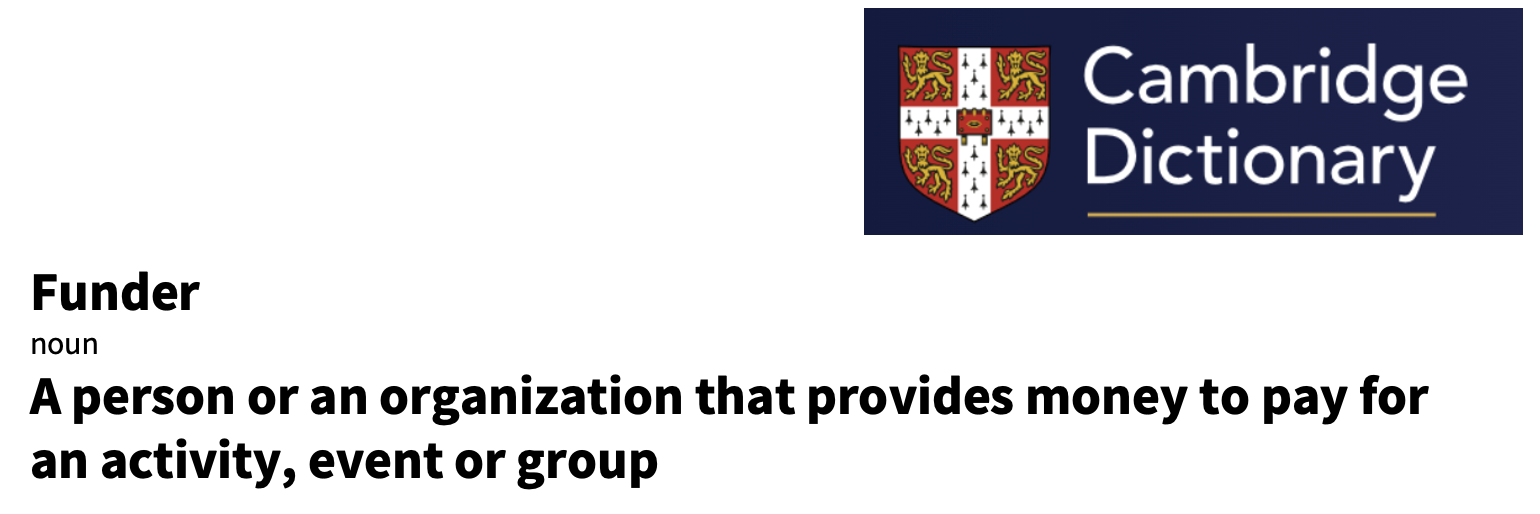Articles, Videos, and Blog Posts
Search this Blog...
How to Create Meaning with Your Money: The Four Foundations of Impact and Joy for Donors
So here it is—the most important thing I’ve learned from a decade of working with donors.
There are four key things you need to focus on to gear up your giving in a way that creates impact, joy, and meaning fo...
As you look to gear up your giving, the very first thing to do is take stock with two simple questions:
How much impact do you think you are having?
How much satisfaction are you feeling?
These two questions go hand in hand, but too often philanthropists focus more on one than the other. Let’s ex...
The more the world becomes uncertain and volatile, the more important it can be for social entrepreneurs to anchor their approach to fundraising in relationships whenever possible.
In this post we'll explore some key approaches to relational fundraising for social entrepreneurs, including how t...
One of the most leveraged things you can do with your own giving is to influence others to give more and better.
As you rise to this challenge, there are five levels of leadership for the field. In which of these ways are you called to be a leader? What larger contribution is trying to happen throu...
Drafting Your Design Thesis for Meaningful Giving
The final step in the process of applying the 10 design fundamentals for meaningful giving to your own philanthropy is to draft a design thesis that incorporates the most salient considerations you have surfaced throughout these exercises.
Here’s ...
Now is the time to identify whatever else is important in your giving.
As we wrap up this series on key philanthropic design considerations, It can be helpful to think in terms of “hard parameters” (e.g., legal and regulatory requirements for which absolute compliance is required) and “soft parame...
One of the biggest challenges to gearing up giving is getting the kind of help that truly makes sense for
you. Bringing on a team can extend your reach and amplify your impact, but doing so also introduces
principal-agent dynamics that make your giving process more complex. So, one of the first thi...
There are three key questions to work through about how your giving plays out over time
When do you plan to get started? Over how long a span of time do you intend to carry out your
giving? And how much time do you intend to spend on your giving relative to your other time
commitments? This post wil...
The question of geographic focus is fundamental to many people’s philanthropy.
Perhaps you already know for sure that you want to focus your giving in a specific place, like your home town or state, for example. Perhaps you’re considering an even tighter footprint, like the Harlem Children’s Zone, ...
Taking A Closer Look at 4 Functional Roles for Making Change
Itʼs important to determine which style of giving is best for you when it comes to translating your
resources into truly meaningful giving. Answering this question starts with stepping back from the
common labels of “funder” and “grantee...
For Meaningful Giving, Try Letting Your "Why" Guide You to Your "What"
What do you really care about? As you gear up your giving, what meaningful impact are you seeking to make with your money and other forms of philanthropic capital? You have tremendous opportunity for meaningful giving when you l...
Understanding Your Own Motivations is Fundamental to Meaningful Giving
Why are you motivated to give? What will it actually take for you to feel joyful and fulfilled through
your giving? These are vital questions to to explore as you seek to engage in meaningful giving, where social impact and you...
When you think about gearing up your giving you might be primarily focused on the money you are planning to give away. However, money is far from the only form of capital you can use to give in a meaningful way.
So letʼs take an inventory of your wealth stock on a more holistic basis. Wealthworks, a ...
Design Fundamental #2: Wealth Stance
One of the most fundamental questions to consider as you make plans to gear up your giving is how you relate to the resources you are giving away. How does your wealth inform your identity and your values? Are you the first in your family to create substantial w...
The Ten W's for Donors: Design Fundamentals for Meaningful Giving
Consciously or not, every donor comes to their giving with a unique combination of factors to incorporate and accommodate. Why not become more aware and deliberate about the key considerations that shape the design of your giving? Th...
Many of us who work in and around philanthropy, whether we are donors, advisors or social entrepreneurs, haven't really looked deeply at the data on wealth distribution and what this means for philanthropy.
Thanks to detailed ongoing research series from Wealth X and Credit Suisse we actually know...
Chances are, if you are involved in giving money away you've been referred to more than once as a "funder." Maybe this is even a term you use to describe yourself. But what does this term actually mean?
Funder: A Term That is Too Broad to Be Useful In Many Situations

This post looks deeper t...



















